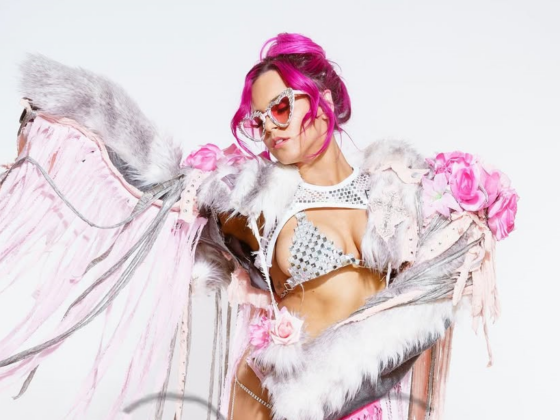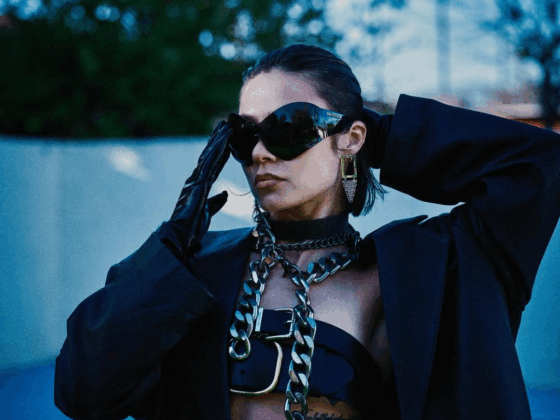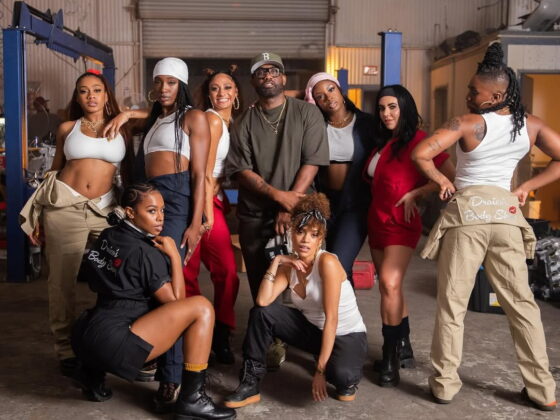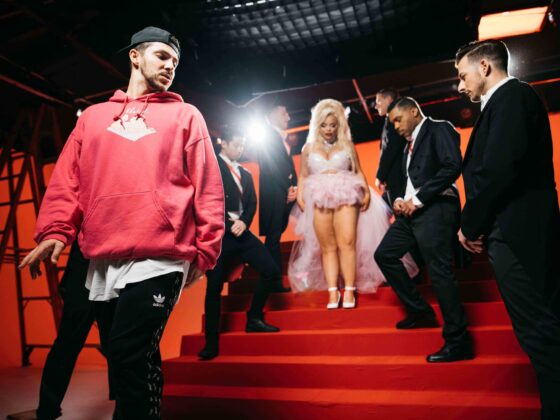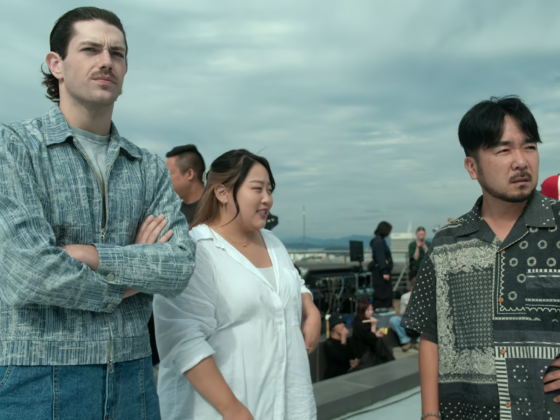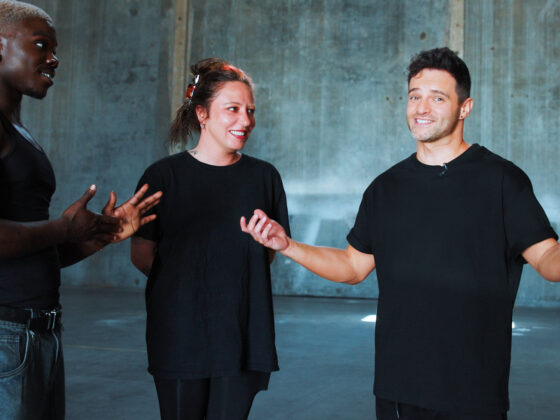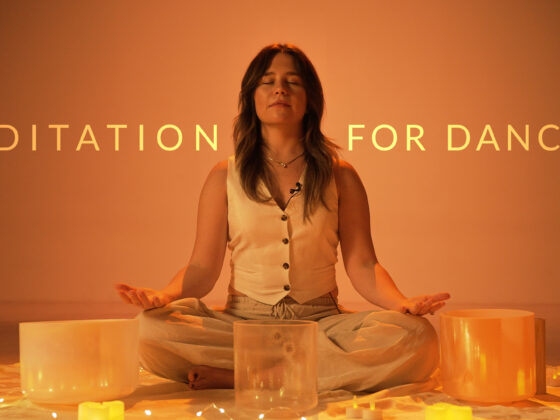Known for his cinematic eye and signature dance visuals, Tim Milgram has directed and produced some of the most iconic dance content on the internet. But this time, the spotlight isn’t only on the choreography, it’s also on the camera. In this exclusive interview, Tim shares how he brought “CRUSH” to life with Nicole Laeno and Canon’s newest, budget-friendly camera, which brings professional image quality to the masses.
Q: This video is such a beautiful showcase of what this tiny new camera can do. How did this collaboration with Canon and Nicole Laeno come about?
Tim: My friends at Canon reached out to me to be part of the launch video for the EOS R50 V and Powershot V1. They had already been in talks with Nicole, who I have shot at various studios, including TMilly, for the past 9 years or so, but we had never formally worked together on something outside of a dance studio. The concept for the launch video was that creators would pass the cameras to one another in “vlog style”, talking about the various features, and Nicole and I would shoot a dance video together and they would document that as well. It wasn’t set in stone yet that our dance video itself would make it into the launch video. Once Canon saw the edit, they loved it and decided to close out their launch video with our dance video.
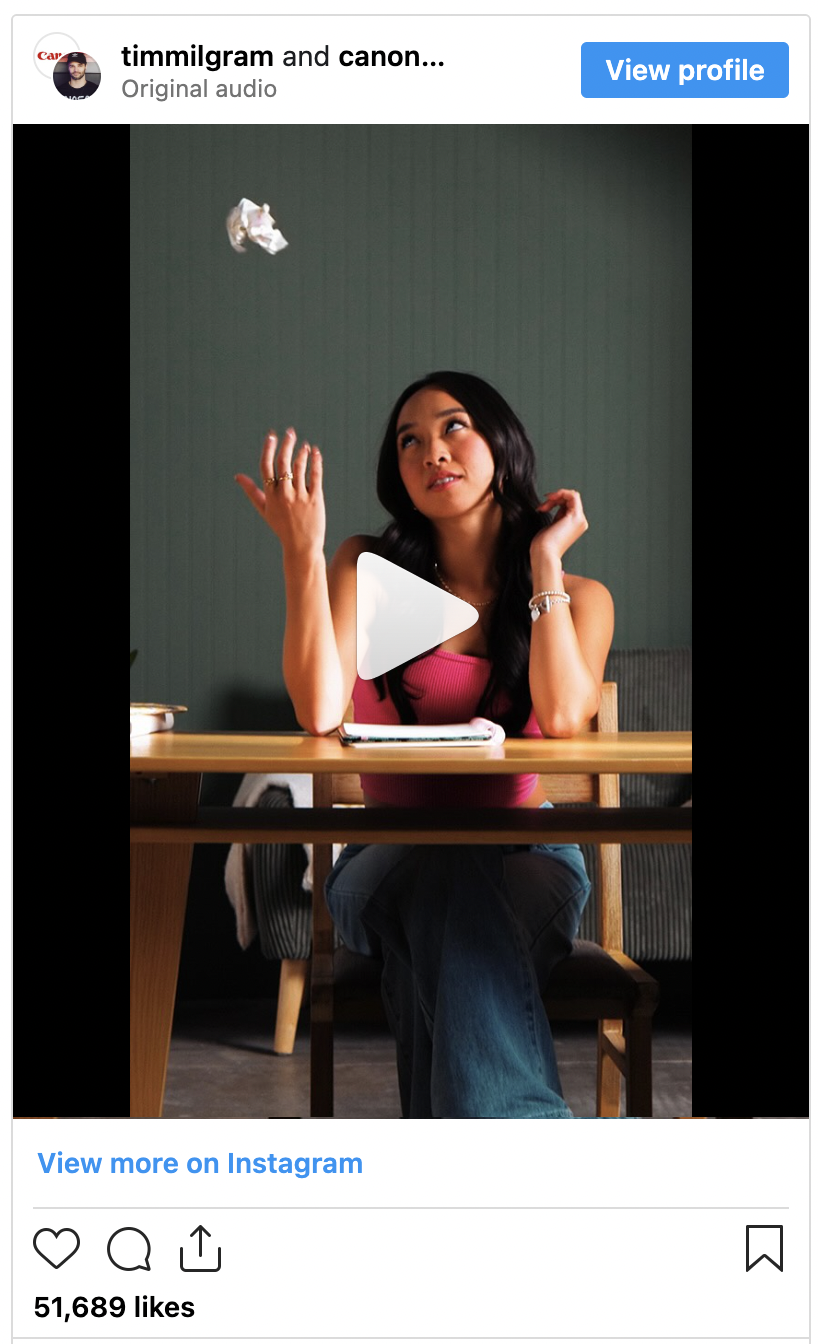
Q: What was the overall vision for this piece, and what story were you hoping to tell through movement and camera work?
Tim: The creative process for this was actually pretty unique for me. Nicole is super busy with college at SDSU, on top of balancing all of the things she’s doing with social media, so she had asked if it was possible if we could do the shoot in San Diego, which would give us more time on set so we can get the best video possible. I did some digging and found a location in SD that could work, and at the same time found a piece of music that I felt really fit Nicole’s aesthetic, so I came up with the concept of “Crush” (also the name of the song) centered around her being in her home, daydreaming about someone she’s thinking about a bit too much, and then expressing that often frustrating emotional rollercoaster through a dance sequence. The location we shot at was perfect because it had all these little sets which made it easy to go from one setup to another. So essentially, the concept came about by combining the location and piece of music, and making sure that it fit into Nicole’s general vibe. But most importantly, whatever I came up with creatively also needed to give me the opportunity within that framework to demonstrate the image quality of the EOS R50 V, which I only got in my hands the day of the shoot. Overall, I really enjoyed the constraints I was given because it let me think creatively outside the “Los Angeles dance concept video” box that we tend to get stuck in.
Q: The camera moves so perfectly with the choreography that it feels like part of the dance. What was your creative process in developing the choreography to work so seamlessly with the camera movement?
Tim: So I had a general idea of the type of movement I wanted in the sequence, and reached out to my friend Ruby Tilley to choreograph because I thought she’d be perfect for it. She came over to my house, and we worked together for about 5 hours, section by section, actually filming a tutorial video to send over to Nicole to learn from. Ruby was really good at incorporating the little ideas I had for how the movement can go with the camerawork into her choreography, and was so incredibly easy to work with. Oftentimes, the choreography on a project is created totally separately from the rest of the production team, and that can result in last minute changes on set for both the choreographer and the camera crew. Because we worked so closely on this from the inception, it made sure that what happened on set was exactly what we planned. Having a choreographer on your team who understands the importance of choreographing for the camera and can really collaborate with a director is a huge bonus, and this portion of the project couldn’t have gone any smoother.
Q: The transitions between sets, like the kitchen to the lit up cyclorama, flow so smoothly. How were those shifts planned and executed?
Tim: Mostly in my kitchen! Like for real. We set up a desk in the middle of my living room, and did the entire kitchen sequence around my kitchen island, to simulate the approximate layout of the sets at the location. On most projects I work on, rehearsals happen at a dance studio, but for this video it just made sense for us to utilize the existing features of my house in the creative process.
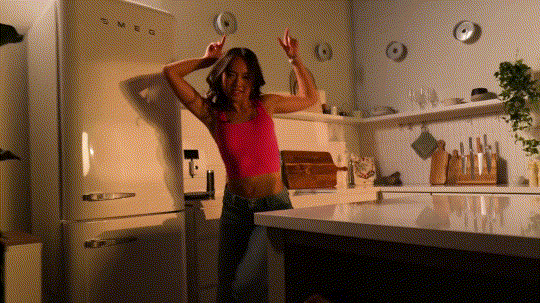
Q: How did you approach lighting and color to enhance the mood of the video?
Tim: I wanted to show a variety of looks within the one minute run-time of the creative, and went for a very “commercial” look for the opening scene in order to demonstrate how a $649 camera can make an “expensive” looking image. While it wasn’t a complicated lighting setup, we did take our time to make sure that first look was really clean and commercial. The lighting for the rest of the video was way more simple and quick to set up. The kitchen scene was lit by a couple of Aputure lights, one of them with the spotlight mount to simulate sunlight coming in through a window off screen to establish a “golden hour” look. Then we had the transition from the kitchen to the cyc, which took a bunch of people plugging in and unplugging lights at just the right time (shout out to my amazing team for coordinating that), and then a super simple lighting setup for the cyc which was just two lights for the subject and lighting the cyc in pink from up above. I used the color pink throughout the video as it fits Nicole and the song nicely and gives us a fun pop of color throughout, since a lot of the walls in the location were white and I wanted the subject to stand out.
Q: What sets this video apart from your previous work? Were there any unique challenges?
Tim: I think it in many ways is similar to my previous work, and I’m actually very fortunate to be able to do what I love to do, and what I’m good at, for a client such as Canon. The level of trust they have in me “doing my thing” is something I’m extremely grateful for.
The only unique challenge on this project was that I had to learn to use a camera I’ve never seen before, in a very fast paced setting while also tending to all the other things a director does on set. I had to have faith that an affordable camera could actually get the job done, without the usual opportunity to shoot some test footage and see what it’s like in an editing program beforehand. This added a bit of stress, but fortunately I was pleasantly surprised with how well the R50 V footage held up in a variety of lighting scenarios. This could have all gone HORRIBLY wrong and I’m very glad it didn’t (nervous laugh).
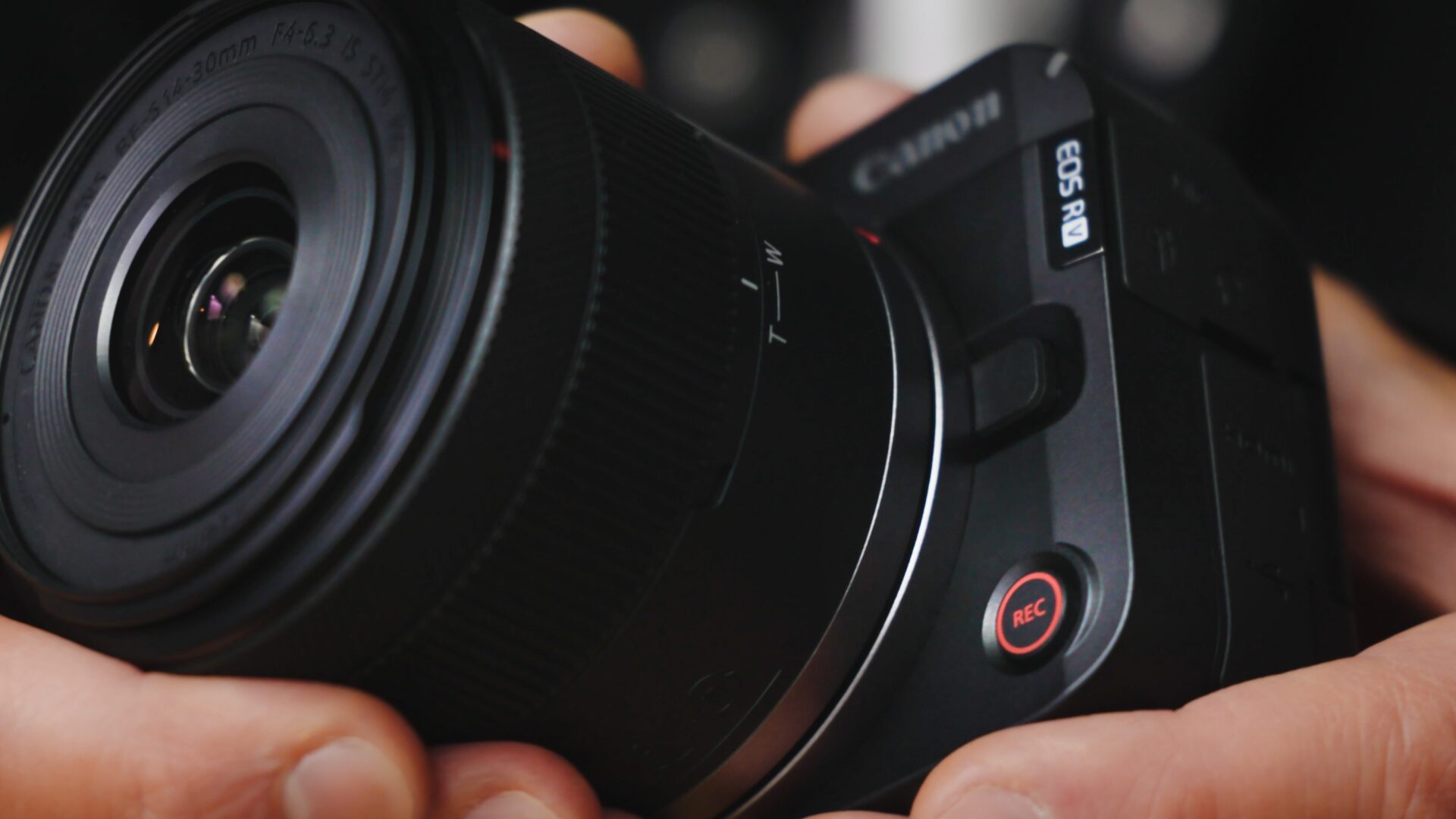
Q: How does this Canon camera differ from others you’ve used, and what impact did it have on the shoot?
Tim: Well, it’s probably the lightest camera I’ve used aside from my phone, which made it really quick to set up on my gimbal and get right to shooting. The good news is that despite the tiny size and weight of this thing, it had some pro-level features such as 10 bit 4:2:2 recording which is not something one would expect at this price point.
Q: What was your favorite shot or sequence in the video, and why?
Tim: I liked the transition from the cyc back to the desk scene, because that was the one thing I didn’t actually plan to do the way that it was edited. When filming the outros, one of the times I just improvised and got creative with the way I moved the camera from under the desk, and somehow that ended up being the perfect transition back to that scene.
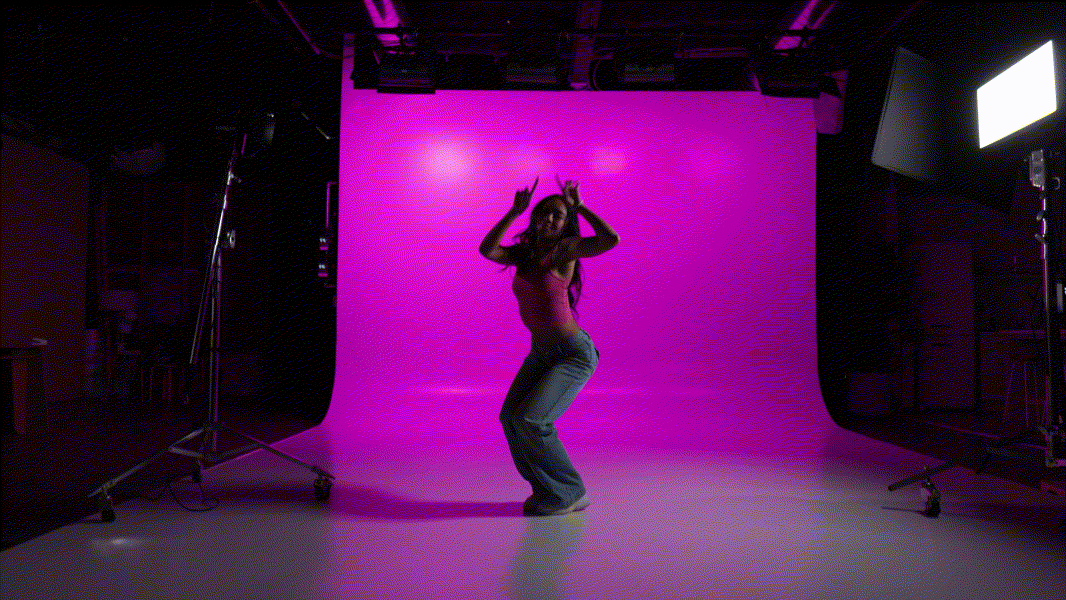
Q: What’s one key lesson you took away from this experience?
Tim: AirBnB’s in San Diego don’t allow dogs.
And also, just trust the process. There were a lot of unknowns coming into this, and as always, it’s very easy to get stressed out wanting everything to be perfect. As long as you believe in the vision, it will work out in the end.
Ultimately, I’m just really excited to finally be able to recommend a camera to people who reach out to me asking for a budget friendly option. Until this point, I’ve kind of felt like I didn’t have an answer for that frequently asked question, and being part of this product launch felt special in the sense that I can actually improve the lives of people who want to get into videography or content creation, and don’t have the means to purchase a $4000 camera body + lenses.
A common phrase we have all heard is “lead by example”. And in this instance, I was given the opportunity to make such an example for the world to see.
10/10 would do again.
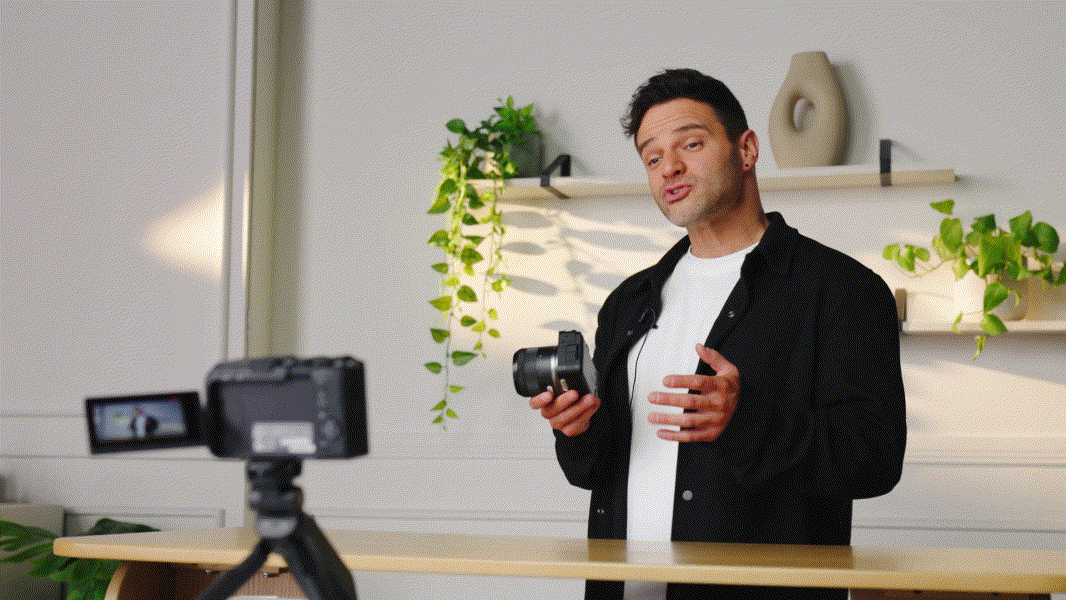
___
You can take dance classes online on TMilly TV. Or join us in-person at our LA studio!
(And since we’re here, follow TMilly TV and TMilly Studio on Instagram too!)



